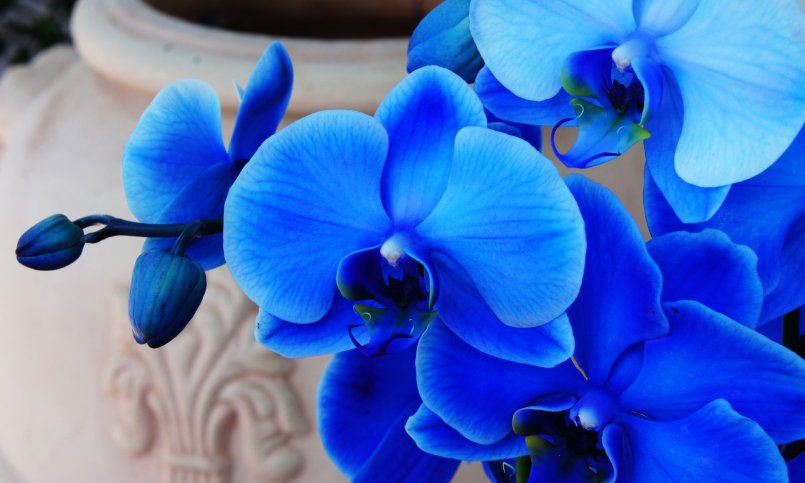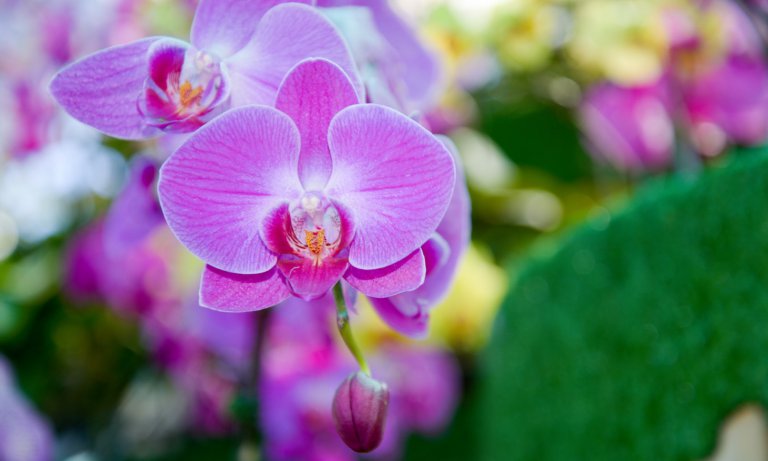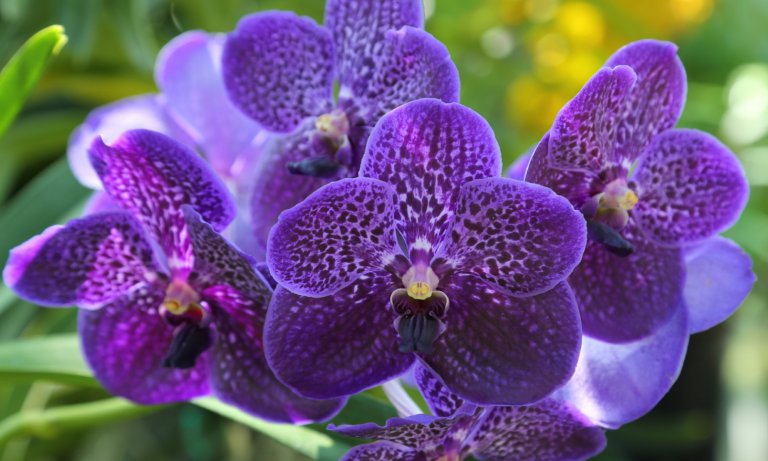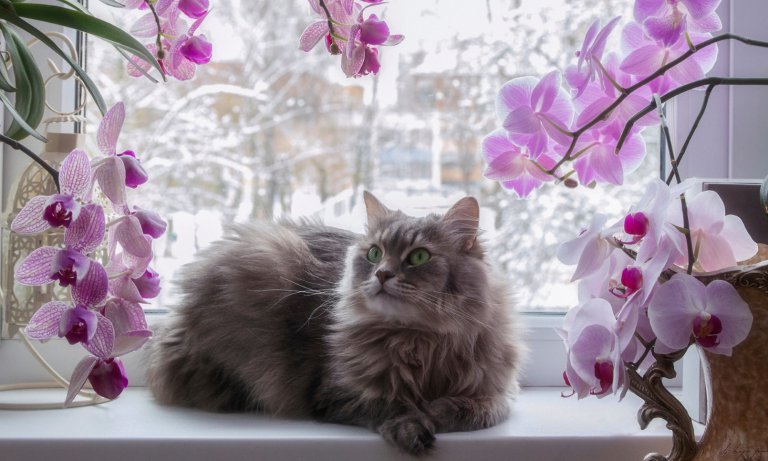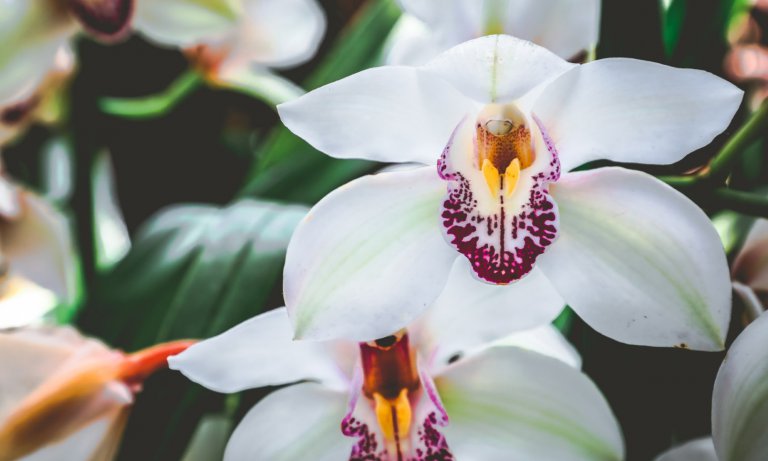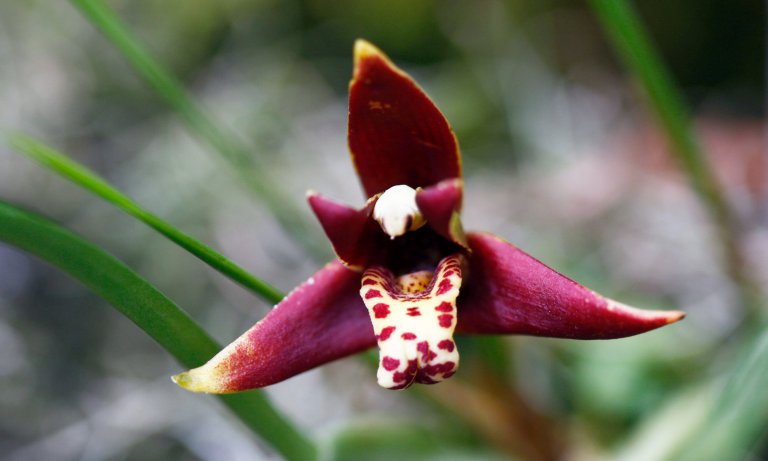Blue flowers have a way of capturing our attention like few others. This is primarily because blue is such a rare color in the natural world.
Few animals or plants exhibit blue pigment, so this leads to an important question:
Are Blue Orchids Real?
There isn’t a straight yes or no answer here, because it all depends on your definition of real. There is a difference between a flower that is naturally blue in the wild and one that is artificially blue.
Are those stunning blue orchid flowers from the store real flowers? Yes, they are real flowers that grow naturally and have real petals. You can continue to care for them in the same way as other orchids.
If you’re curious about them, you can check a few of them out here:
Did those orchids start out that way? No. Unless you have a Vanda orchid, this is not a natural color, and you essentially have an artificial flower.
So, How Are These Real Flowers Such a Fake Shade of Blue?
There are a few different “species” of blue orchid out there. These are highly sought after for the uniformity and vibrancy of their color. They often have fancy names like Ocean Breeze, Blue Mystique, and Blue Sapphire.

These flowers are so perfect that they look straight out if a child’s coloring book, or as if they had been injected with food coloring. The reality isn’t far off. This is a form of human intervention, and it doesn’t last.
A dye is injected into a white Phalaenopsis orchid to create this vivid blue effect. An even bigger disappointment to orchid lovers is that the next bloom will be white. The genetic make-up of the plant takes over once the first bloom has finished.
Are There Any Naturally Blue Orchids?
The true blue gene is present in some orchids, but not many.
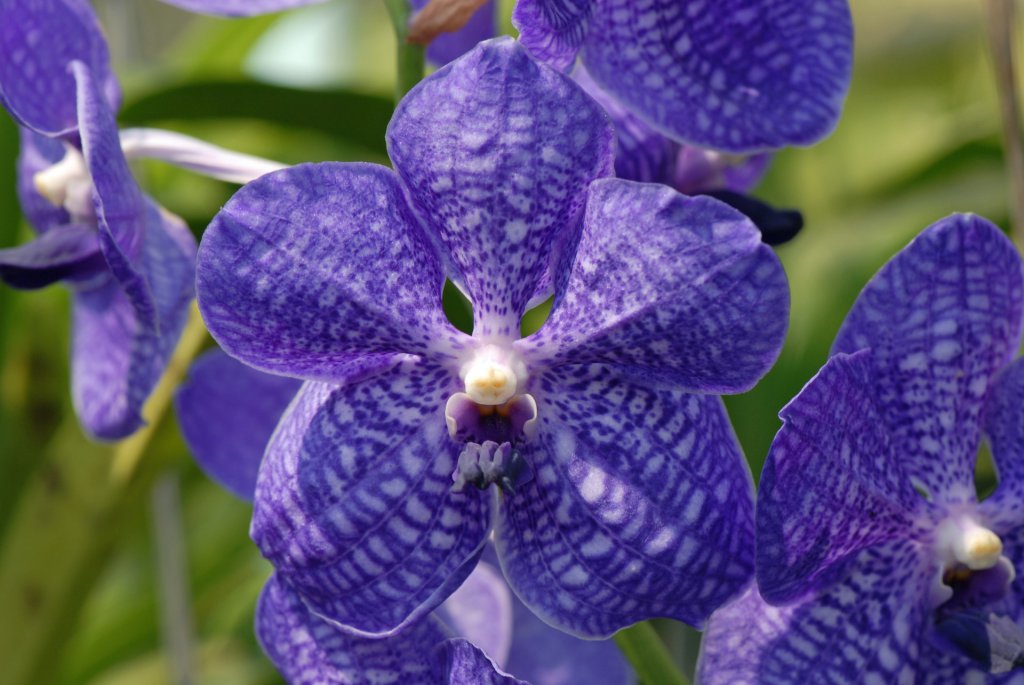
The Vanda orchid variety contains one naturally-occurring species that is probably the bluest you will find. It’s a softer blue with a purple tone rather than the electric blue of the Mystique or Sapphire.
This dappled blue Vanda orchid is more delicate than the showy fake blue orchids above. It was first discovered by a botanist called Dr. William Griffith in 1837 in the Himalayas. In the wild, it can produce as many as 30 flowers per plant, which adds to its appeal amongst orchid hunters.
If you like the look of these naturally blue Vandas, make sure you check out our Vanda care guide for more pictures, information, and care instructions!
Other Blue Flowers That Are Easier to Care For
Vanda orchids might not be as easy to look after as you hope – or as blue. Thankfully, there are lots of other blue garden flowers that are just as spectacular.
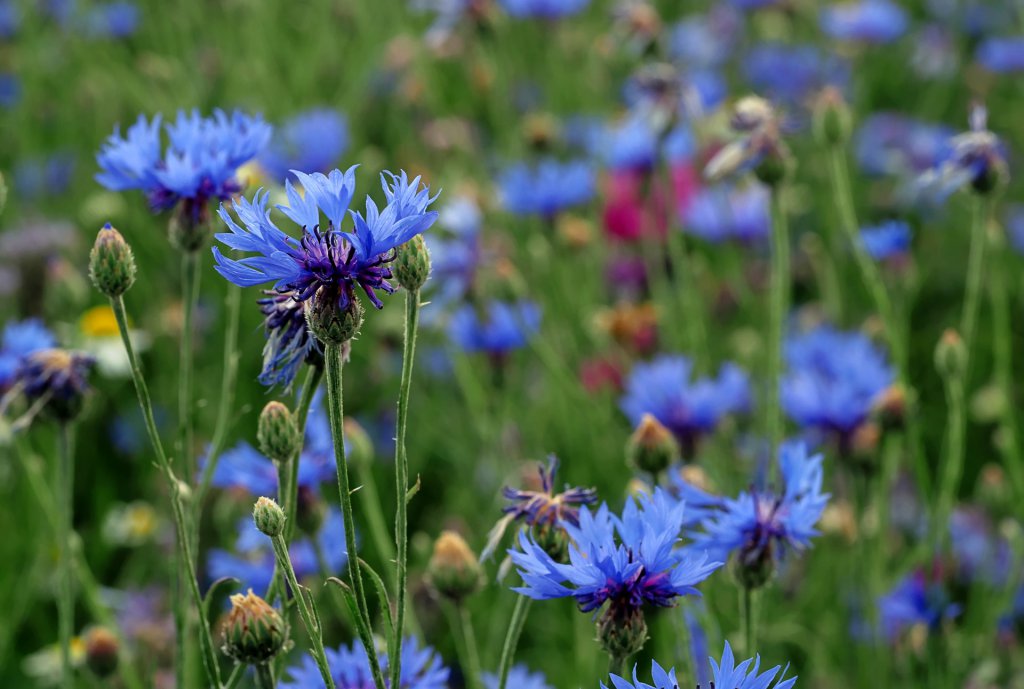
- The Himalayan poppy is arguably the most stunning shade of blue in the natural world. It isn’t far from the color of the Blue Sapphire Orchid. But, it isn’t the hardiest.
- The cornflower offers a splash of deep, vibrant blue to any wildflower meadow and is easy to grow.
- A delphinium is more on the purple end of the spectrum, yet it has a deep color and looks great with high borders.
- Hydrangea can be a vibrant blue shrub, but only with the right acidity level in the soil.
- Tiny forget-me-not flowers are an excellent contrast when bordered by redder tones.
Want to learn more about orchids? Check out our Types of Orchid page for care guides, pictures, and information.

